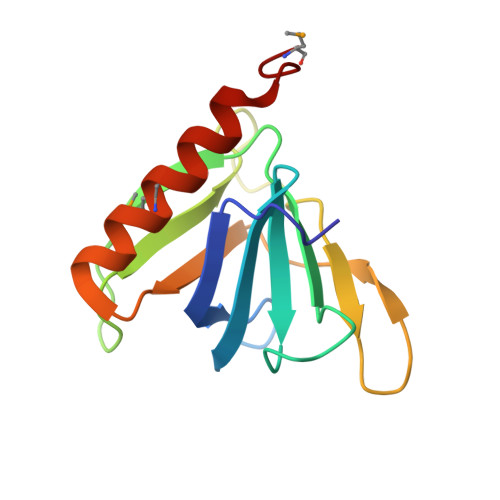Structural basis of 3-phosphoinositide recognition by pleckstrin homology domains.
Lietzke, S.E., Bose, S., Cronin, T., Klarlund, J., Chawla, A., Czech, M.P., Lambright, D.G.(2000) Mol Cell 6: 385-394
- PubMed: 10983985
- DOI: https://doi.org/10.1016/s1097-2765(00)00038-1
- Primary Citation of Related Structures:
1FGY, 1FGZ - PubMed Abstract:
Lipid second messengers generated by phosphoinositide (PI) 3-kinases regulate diverse cellular functions through interaction with pleckstrin homology (PH) domains in modular signaling proteins. The PH domain of Grp1, a PI 3-kinase-activated exchange factor for Arf GTPases, selectively binds phosphatidylinositol 3,4,5-trisphosphate with high affinity. We have determined the structure of the Grp1 PH domain in the unliganded form and bound to inositol 1,3,4,5-tetraphosphate. A novel mode of phosphoinositide recognition involving a 20-residue insertion within the beta6/beta7 loop explains the unusually high specificity of the Grp1 PH domain and the promiscuous 3-phosphoinositide binding typical of several PH domains including that of protein kinase B. When compared to other PH domains, general determinants of 3-phosphoinositide recognition and specificity can be deduced.
Organizational Affiliation:
Program in Molecular Medicine, University of Massachusetts Medical Center, Worcester 01605, USA.
















